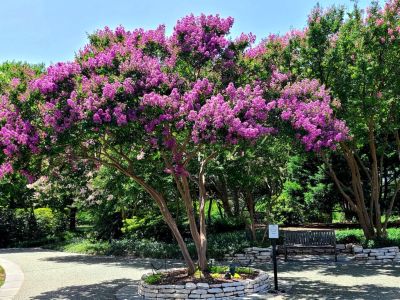What is Crepe Myrtle Blight?
Crepe myrtle tip blight results from a fungus that causes leaves near the tips of the tree branches to turn brown in spring or summer. Look closely at the infected foliage to see the small black spore-bearing bodies.
Crepe Myrtle Blight Treatment
Treating blight on crepe myrtle begins with proper care and cultivation practices. Like many fungal diseases, crepe myrtle tip blight can be discouraged by following a few simple rules about caring for your trees. Crepe myrtle trees need regular irrigation to bloom and thrive. However, they don’t need overhead watering. Overhead watering moistens the foliage which encourages the fungus to develop. Another good way to use prevention as part of crepe myrtle blight treatment is to encourage air circulation around the plants. Prune out branches that cross and those that head into the tree center to allow air into the crepe myrtles. Don’t forget to sterilize your pruning tool by dipping it in bleach. This avoids spreading the fungus. Another action you can take to prevent the fungus is to remove old mulch regularly and replace it. The crepe myrtle tip blight fungus spores collect on that mulch so removing it can prevent an outbreak from recurring. Before you begin using fungicide as a crepe myrtle blight treatment, make sure your tree’s problem is crepe myrtle tip blight. Take in leaves and twigs to your local garden store for advice on this. Once the diagnosis is confirmed, you can use fungicide to help your trees. Spray the infected crepe myrtle trees with copper fungicide or lime sulfur fungicide. Start spraying when the leaf tip symptoms first show up, then repeat every ten days during wet weather.
